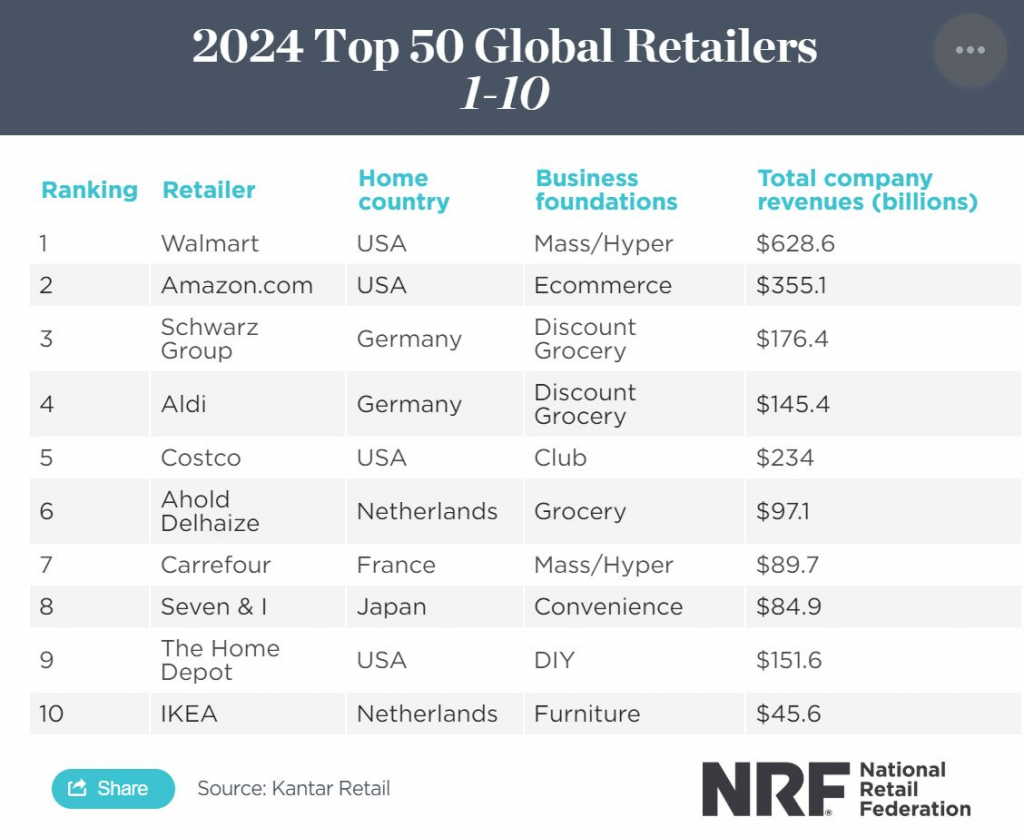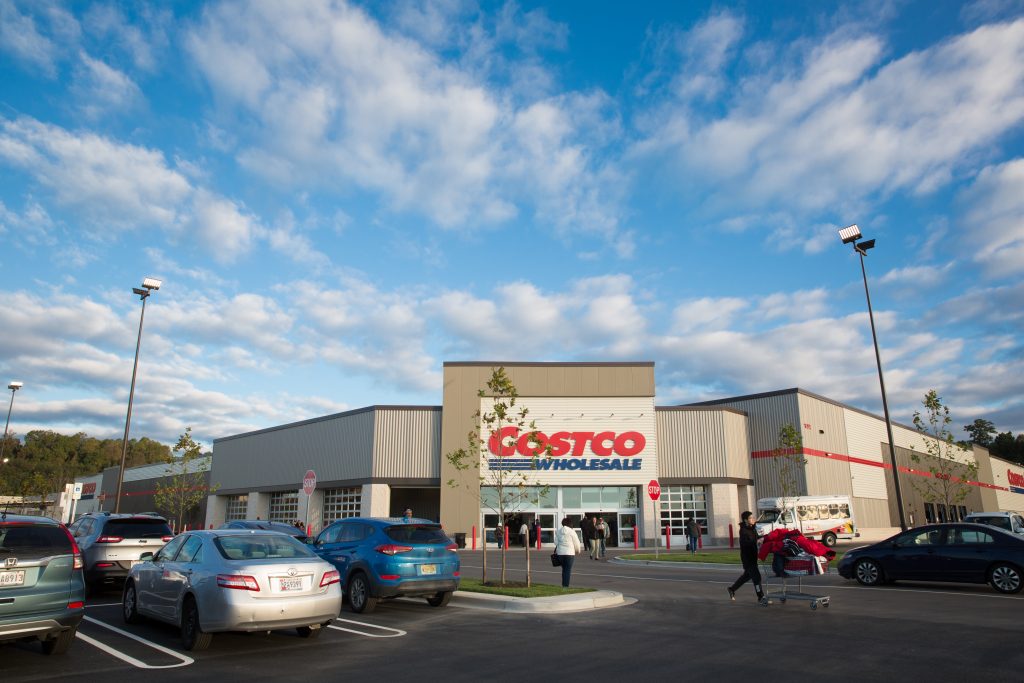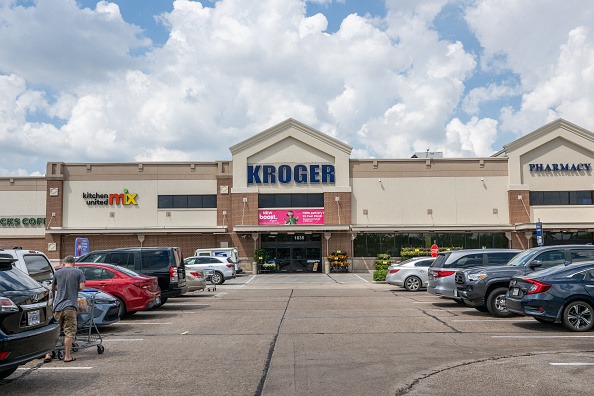How Costco and Walmart Maintain Growth—Even During Economic downturns
Companies with extremely loyal customers tend to grow their revenue significantly faster than their less popular counterparts

- As longtime loyalty leaders, Costco (COST) and Walmart (WMT) have consistently driven increased shareholder value, regardless of prevailing economic conditions.
- Both retailers have shown resilience by growing sales during past recessions, thanks to strong customer bases and competitive pricing, making them attractive investments even in uncertain times.
- Investors should note, however, that the recent bull run in the stock market has stretched valuations, which may prompt some market participants to wait for better entry points into these stocks.
Perhaps the best way to enhance a company’s shareholder value is by winning customers and keeping them—preferably for a lifetime.
And two brick-and-mortar behemoths—Walmart (WMT) and Costco (COST)—are seeking to do exactly that, whether the economy’s booming or falling into recession.
It starts with an unshakable belief in “customer lifetime value,” or CLV, a metric that quantifies the value of retaining a customer for the long term. Think of it as an ingrained, “sticky” relationship between a company and its customers that’s built upon a solid foundation of trust and satisfaction.
Companies with extremely loyal customers tend to grow their revenue significantly faster than their less popular counterparts, says Rob Markey, founder of the global customer strategy and marketing practice at Bain & Co.
In fact, “loyalty leaders” have the potential to increase their revenue 2.5 times more quickly than their peers, while delivering two to five times more in shareholder returns over the ensuing 10 years, Markey says.
In his aforementioned article, Markey singled out Costco (COST) and Amazon (AMZN) as companies among the nation’s “loyalty leaders.” However, a 2024 report from the brand research consultancy Brand Keys indicated that three retailers enjoy a remarkable degree of customer loyalty. They’re Amazon, T.J. Maxx (TJX) and Walmart (WMT), in that order.
These accolades further underscore how lifetime customer loyalty represents a key competitive advantage for Costco and Walmart, allowing these “loyalty juggernauts” to leverage their strong customer bonds through varying economic cycles, including downturns.

Costco’s loyalty strategy
Costco, a retailer focused on consumer staples, operates primarily in the consumer wholesaling sector, offering bulk quantities of merchandise at competitive prices. Customers pay an annual membership fee for access to these savings.
The business model at Costco is effectively one big loyalty program. Customers must become members to shop there. And while there’s a fee for that membership, observers believe the system fosters a sense of exclusivity and loyalty among the members.
Customers are so dedicated to the Costco business model that roughly 93% renew their memberships annually in the United States. Globally, that figure dips slightly to 90%, but it’s still significantly higher than the industry average of around 80%. These figures confirm that members value the customer experience at Costco. They’re willing to pay for the right to shop at the company’s brick-and-mortar stores.
Costco has been so successful at delivering value that the company is the third-largest retailer in the United States by annual revenue, immediately following Walmart and Amazon (AMZN). And, remarkably, Costco spends a negligible amount of money on advertising, while continuing to grow its footprint.

The one limitation for Costco relates to the company’s digital ecosystem, which is far less developed than those of Amazon and Walmart. Online shopping doesn’t necessarily suit the Costco business model, because the company’s stores are effectively warehouses, where goods are stacked on pallets and purchased in bulk. For this reason, shoppers usually spend more at Costco than at Walmart—$150 per trip at Costco, compared to $54 at Walmart.
But bulk buying doesn’t lend itself very well to free shipping. One of the pillars of the Costco model has been its “cash and carry” nature, with customers often loading up on weeks or even months of supplies during a single visit. That means Costco customers must have the capacity to store these goods in their homes—a factor that helps define the “average” Costco shopper.
Importantly, Costco focuses on a smaller number of higher-quality items. The average Costco store stocks about 4,000 stock keeping units (SKUs), while the average Walmart offers closer to 150,000. Amazon is said to offer several hundred million SKUs on its platform.
Costco acquired Innovel Solutions in 2020 for $1 billion and rebranded it as Costco Wholesale Logistics. This division could help the company broaden its delivery services, especially the “last mile.” But with its relatively underdeveloped digital ecosystem and the narrow focus of its business model, its e-commerce potential doesn’t match Amazon’s or Walmart’s—at least for now.
Still, Costco excels in customer satisfaction. Earlier this year, the American Customer Satisfaction Index (ACSI) listed Costco the top retailer for customer satisfaction in the United States, based on thousands of consumer surveys. Walmart also performed well, securing the second spot in the annual ACSI rankings, reinforcing the connection between customer satisfaction and retail success.
Walmart’s loyalty strategy
In the online era, companies often integrate loyalty schemes into their broader digital marketing strategy. That way, they can create a personalized and enduring relationship with customers, encouraging repeat business and deeper brand loyalty.

In 2020, Walmart launched its Walmart Plus service (aka Walmart+), positioning it as a competitor to Amazon Prime. For an annual fee of approximately $98, Walmart Plus members enjoy benefits that include unlimited free deliveries from Walmart stores (with a $35 minimum for groceries), as well as free shipping from Walmart.com with no minimum order required. The program also offers perks like prompt access to sales promotions and events, video streaming services via Paramount Plus, and a convenient “return from home” service.
Walmart Plus also offers fuel discounts and mobile “scan & go” that enables customers to use smartphones to scan and pay for purchases while shopping in the store. The company also plans to entice “hundreds of thousands” of new independent sellers to its platform by offering incentives like free storage during the peak holiday season. That not only enriches the customer experience but also broadens Walmart’s competitive edge in digital retailing.
The company upgraded Walmart Plus in 2022 by launching Walmart Rewards. Added technology enables members to earn digital currency while shopping in-store and online and then deposits that currency in their Walmart wallets. Members can use the rewards for discounts on purchases.
The investment in digital operations has been paying significant dividends. Last year, Walmart reported its e-commerce sales had surpassed $100 billion annually for the first time. And online sales continue to grow in robust fashion, indicating Walmart is creating a stickier customer ecosystem through the enhancement of its digital offerings.
In its Q1 2024 earnings report, Walmart announced its e-commerce business in the U.S. had grown by 22%. That follows closely upon the company’s e-commerce growth during Q4 of 2023, which was 23%. Those figures become even more impressive when one considers online sales declined at Target (TGT) during the last three months of 2023.
Meanwhile, Sam’s Club, a key division of Walmart, operates as a member-focused discount warehouse, much like its competitor Costco. However, as an integral part of Walmart, Sam’s Club’s financial and operational metrics are intertwined with its parent company, preventing analysis as a standalone entity.
For context, Sam’s Club’s revenue in 2023 was $84 billion, which accounted for approximately 14% of Walmart’s total revenue for the year, which amounted to $611 billion.
But what about hard times?
Costco, Walmart and the “Great Recession”
Historically, customers scale back discretionary purchases during economic downturns, often realizing a retailer’s worst nightmare. And it could happen again.
In the first quarter of 2024, the growth of gross domestic product (GDP) in the U.S. fell to 1.6%—a significant decline from 3.4% in the last quarter of 2023.
That economic backdrop could make investing in Costco and Walmart more attractive. During the last major economic recession in the United States—the Great Recession of 2007-2009—revenue at both companies fared extremely well.
Walmart revenue grew by 8% from 2007 to 2008 ($348 billion to $377 billion) and by 7% from 2007 to 2009 ($377 billion to $404 billion). So, a recession in 2024 could actually boost sales at Walmart. Under that scenario, Walmart’s recent investments into its e-commerce division should prove extremely valuable.
Costco’s revenue also held up well during the Great Recession, but not quite as well as Walmart’s. From 2007 to 2008, Costco saw its revenue climb by 12% ($64 billion to $72 billion), but from 2008 to 2009, Costco’s revenue declined slightly, dropping from $72 billion to $71 billion. However, Costco returned to growth the very next year when revenues climbed by about 10%.
The importance of customer loyalty during economic pullbacks
Customer satisfaction and loyalty accolades can gain significance in times of economic hardship when competition intensifies for every dollar of consumer spending. Consumers become risk-averse and gravitate toward reputable companies offering consistency, reliability and value.
That helps explain why Costco and Walmart—known for essentials such as food, beverages and household goods—have experienced stable demand during downturns. The fact that both excel in meeting the needs of consumers across all life stages doesn’t hurt, either. Plus, their strategic emphasis on bulk sales and competitive pricing appeals to a diverse customer base.
On top of that, recessions arguably fit right into the discount retail business model. As household budgets tighten, consumers who wouldn’t normally consider discount stores start to reevaluate their priorities. This shift increases customer traffic at discount retailers, enabling them to expand their customer bases, even during periods of economic stress.
COVID-19 serves as a solid example. Walmart became a destination for all kinds of shoppers during the pandemic, including “many people who don’t usually visit the store much for groceries,” according to Neil Saunders, a managing director in the retail division of the GlobalData consulting firm.
These observations illustrate that both companies could compete effectively during a subsequent economic downturn.
Valuation considerations
As of July 2024, the major market indices are brushing against all-time highs. That doesn’t necessarily make the stock market more susceptible to a correction but suggests bullish sentiment prevails.
There’s no guarantee that a correction will materialize soon, but investors should keep in mind that 10% corrections in the stock market are common. Intra-year S&P 500 drawdowns of 10% have occurred every 1.6 years, on average, going back to 1928, says Charlie Bilello, director of research at Pension Partners.
Moreover, sky-high earnings expectations for the second half of 2024 are the apparent underpinnings of the current stock market valuations. Analysts are forecasting Q3 and Q4 2024 earnings will grow by 8.2% and 17.4%, respectively, notes FactSet Research Systems. That’s substantially higher than the 5.7% growth observed in Q1.
As a result, the price/earnings (P/E) ratios for many companies look somewhat inflated. Especially some of the stocks that have experienced the strongest gains in the last twelve months. A case in point, Nvidia (NVDA) has a trailing 12-month GAAP P/E of about 75—more than three times greater than the broader S&P 500, which is closer to 24. However, Nvidia’s forward P/E —which is based on expected future earnings—is a bit more palatable, hovering around 40.
Equally important, Nvidia’s forward P/E assumes the company will generate over $100 billion in profit during fiscal year 2028, a significant leap from the $4 billion in profit the company recorded during 2023. These figures illustrate how valuations in the stock market depend on future earnings projections. Should these forecasts prove overly optimistic, stock prices will almost certainly need adjustment.
This is pertinent to the valuation analyses of both Costco and Walmart because much like Nvidia, both stocks have high P/E ratios, compared to the average P/E in the sector. Costco has a trailing 12-month GAAP P/E of about 52, compared to the sector median of 21. In comparison, Walmart’s P/E is more reasonable, clocking in at about 30.
Over the last five years, shares of Costco have appreciated by about 215%, while shares of Walmart have appreciated by 85%.
Final takeaways
Costco and Walmart have both started 2024 on strong footing, each reporting solid performance in the first quarter. Both saw total revenue grow by 6% compared to the same period last year. Walmart reported $161 billion in Q1 2024 sales, while Costco reported about $57 billion.
With wind beneath their wings, Costco and Walmart both look well-positioned to continue to grow in 2024, even if the economy falters. Both stocks look attractive relative to other stocks and sectors that could experience sharper losses in revenue during a potential recession. And that’s in large part due to the fiercely loyal customers that frequent both enterprises.
However, one can’t overlook the fact that the stock market is currently trading near all-time highs. And that valuations—based on the previous analysis of Price/Earnings data—appear slightly inflated. As such, investors and traders that aren’t uber bullish on the economy may want to wait for more attractive entry points, whether that be in shares of Costco, Walmart, or even Nvidia.
Andrew Prochnow has more than 15 years of experience trading the global financial markets, including 10 years as a professional options trader. Andrew is a frequent contributor of Luckbox Magazine.
For live daily programming, market news and commentary, visit tastylive or the YouTube channels tastylive (for options traders), and tastyliveTrending for stocks, futures, forex & macro.
Trade with a better broker, open a tastytrade account today. tastylive, Inc. and tastytrade, Inc. are separate but affiliated companies.



















